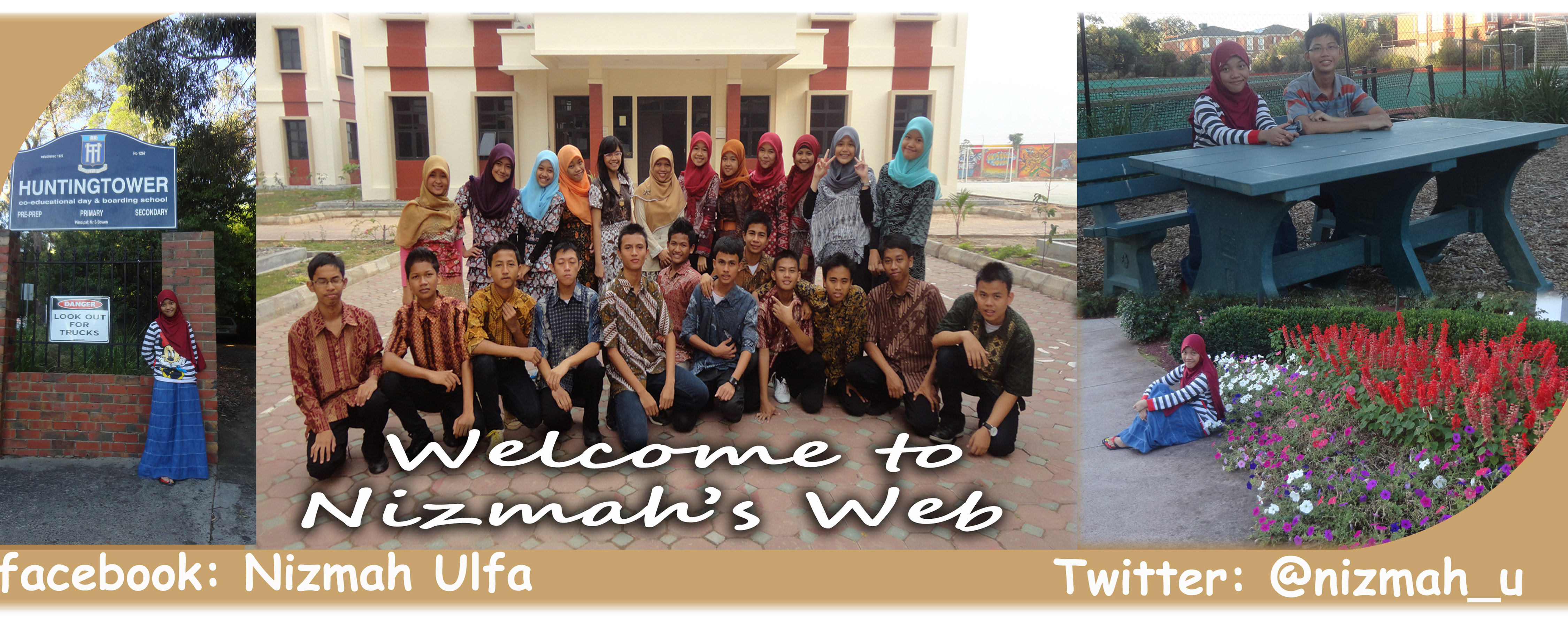

Raphael-One of an artistic people
By: Nizmah Ulfa
Raffaello Sanzio (or Santi, Raphael in English) was an Italian Renaissance painter, architect and designer. Raphael is best known for his Madonnas and for his large figure compositions in the Vatican in Rome. Raphael was the son of Giovanni Santi and Magia di Battista Ciarla; his mother died in 1491. His father was, according to the 16th-century artist and biographer Giorgio Vasari, a painter "of no great merit." He was, however, a man of culture who was in constant contact with the advanced artistic ideas current at the court of Urbino. He died when his son was 11 years old. Raphael's mother supposedly cared for her infant son herself rather than sending him out to a wet nurse, and the close relationship with his parents was invoked by contemporaries as the reason for his sweet disposition.
In his early career Raphael worked in various places in Umbria and Tuscany.
From 1504 to 1508 he worked much in Florence, and this is usually referred
to as his Florentine period, although he never took up permanent residence
in the city.![]()
Although Vasari's account of Raphael becoming a pupil of Perugino before his father's death is probably a fiction, he unquestionably worked in some capacity in the older artist's studio during his youth. Perugino was at this period one of the most admired and influential painters working in Italy, and Raphael's familiarity with Perugino's manner, both in style and technique, is evident from the altarpieces he painted for churches in his native Umbria, such as the Crucifixion (c. 1503; National Gallery, London), the Coronation of the virgin (c. 1503; Pinacoteca, Vatican). The early paintings include many of Perugino's characteristic mannerisms — the slender physique of the figures whose grace is exaggerated by their often balletic poses; the sweetness of the facial expressions; and the formalized landscape backgrounds populated by trees with impossibly slender trunks. That he soon completely outstripped Perugino is best seen by comparing Raphael's Marriege of the virgin(1504; Pinacoteca di Brera, Milan) with perugino's painting of the same subject (Musée des Beaux-Arts, Caen). The two compositions are closely similar in many ways, but Raphael far surpasses Perugino in lucidity and grace.
Raphael was clearly a prodigy, as is shown by the request by Pinturrichio, then one of the leading artists in Italy, for Raphael to supply detailed compositional drawings, of which two survive (1502-03; Galleria degli Uffizi, Florence; Pierpont Morgan Library, New York), for frescoes in the Piccolomini library in Siena.
Raphael was called to Rome toward the end of 1508 by Pope Julius II at the suggestion of the architect Donato Bramante. At this time Raphael was little known in Rome, but the young man soon made a deep impression on the volatile Julius and the papal court, and his authority as a master grew day by day. Raphael was endowed with a handsome appearance and great personal charm in addition to his prodigious artistic talents, and he eventually became so popular that he was called "the prince of painters."
Raphael was quick to see the value of engraving in the dissemination of his work, and through his collaboration with the Bolognese reproductive engraver Marcantomio Raimondi his reputation and influence spread throughout Europe. Raphael seems to have mainly given him drawings related to his painted projects, but some of Raimondi's more elaborate plates — for example, the Massacre of the innocents and Il Morbetto — were probably made from drawings especially intended for the purpose.
So Bramantesque is the architecture of school of athens that it seems probable that Raphael was working with Donato Bramante as early as 1509, perhaps in preparation for his succession to the post of capomaestro of the rebuilding of St Peter's after Bramante's death in 1514. During the next six years, however, progress on St Peter's was very slow, and his only contribution seems to have been the projected addition of a nave to Bramante's centrally planned design. Most of his work on St Peter's was altered or demolished after his death and the acceptance of Michelangelo's design, only a few drawings have survived. Having been named (1514) successor to Bramante as chief architect of the Vatican, Raphael also designed a number of churches, palaces, and mansions.
Unable to build a new Rome to rival the old, Pope Leo X instead commissioned Raphael to draw a reconstruction of the ancient city, which the artist undertook together with an investigation of the work of the Roman architectural writer Vitruvius. In this undertaking Fra Giocondo and Angelo Colocci would exert profound influence on the depth of Raphael's architectural insight, already refined by his long association with Bramante, who had been a remarkably insightful interpreter of ancient architecture.
Raphael never married but is said to have many lovers. Chief among these is Margherita Luti who was his mistress throughout his life in the papal court. He was engaged to Cardinal Medici Bibbiena's niece, Maria Bibbiena, but this seems to have been at the request of the cardinal rather than any real enthusiasm on the part of the artist.Raphael died on the 6th of April 1520 (on his 37th birthday) and was buried the next day in the Pantheon.
source: Wikipedia